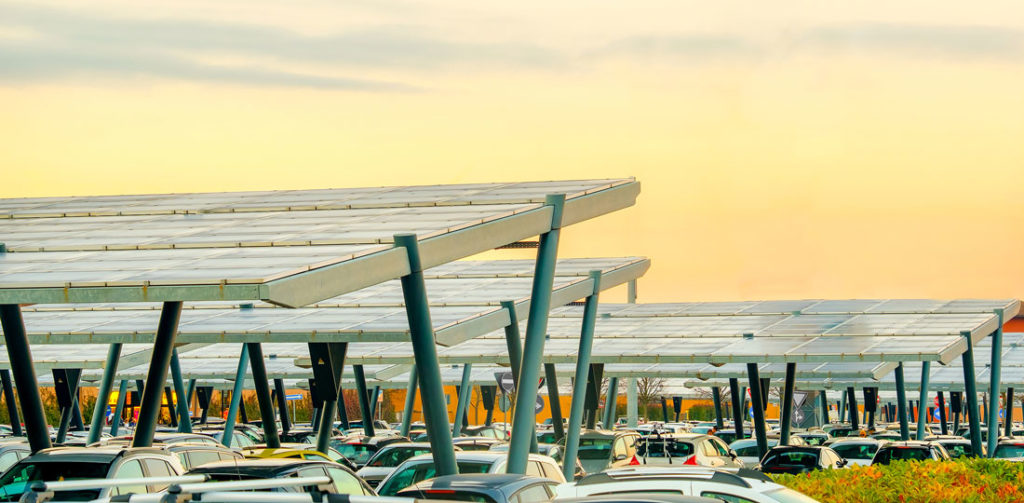Cooling solar installation prices could trigger a hot new trend in the parking industry.
The growth of solar initiatives in the parking sector has, until now, been stunted by sky-high prices — but it appears that the leader of the renewable energy market is on the road to affordability. The Solar Energy Industries Association (SEIA) has reported a solar installation price drop of 19% in the last 12 months, marking a total reduction of 70% since 2010.
Though solar projects are still ambitious undertakings, such a large price reduction improves their economic viability significantly. This, along with a rise in municipally-backed incentives nationwide, makes it highly likely that more small- and medium-sized businesses will seek solar initiatives for their parking facilities — and with good reason.
Energy
Solar photovoltaics produce clean, renewable energy that can minimize or eradicate a structure’s carbon footprint. The power they generate can make a facility completely self-sufficient (with a little help from LED retrofits), reducing running costs and boosting operational efficiency. Plus, larger installations are able to produce surplus energy that can be sold back to the grid for profit; a 28-acre parking lot fitted with solar panels can produce 8 megawatts of energy — enough to power around 1,000 homes.
Shelter
Solar canopies provide valuable shelter to consumers and their vehicles. Beyond the comfort and practicality of being protected from the elements, parking in a sheltered space minimizes fuel evaporation and helps prevent vehicles from becoming too hot, eliminating the need to crank the A/C at first chance. Canopies can therefore encourage the occupation of exposed top-level stalls that are traditionally seen as less desirable, and may otherwise sit vacant during heatwaves.
Solar canopies also provide protection to the asphalt beneath them, reducing weather-related wear and the burn-off that contributes to detrimental temperature increases in cities. Known as the “urban heat island” effect, man-made temperature elevation can lead to increased energy consumption, impaired water quality, and expedite the formation of ground-level ozone, otherwise known as smog.
Green
Solar canopies send an important message to parkers about a business’ commitment to green initiatives. Such a strong, visual sustainability pledge is powerful when 55% of consumers are actively seeking green products and services. The green market movement emphasizes that, now more than ever, the pressure is on for businesses to preserve or enhance the needs of future generations — and investing in the renewable energy source with the strongest public support may be the ideal place to start.
Solar projects still bear the weight of financial risk, but it’s a burden that continues to shrink and pale into insignificance as consumer support for green initiative swells and technological progress makes them more accessible than ever.
As Benjamin Franklin said, “By failing to prepare, you are preparing to fail.” Managing facilities with on-site solar panels is still a great unknown for many parking operators. However, in light of a palpable shift towards green consumerism, it’s a prospect that demands attention — and fast.
Sustainability with Impark
In 2007, Impark became North America’s first parking management company to receive Carbon Neutral Parking Company certification. Two years later, we became a founding member of the Green Parking Council (GPC), a nonprofit organization that provides direction and guidance for the conversion of parking facilities to sustainable, environmentally responsible assets.
We’ve worked closely with our portfolio of clients over the years to re-engineer parking facilities into sustainable, environmentally sound structures while also increasing revenues and operational efficiencies.




